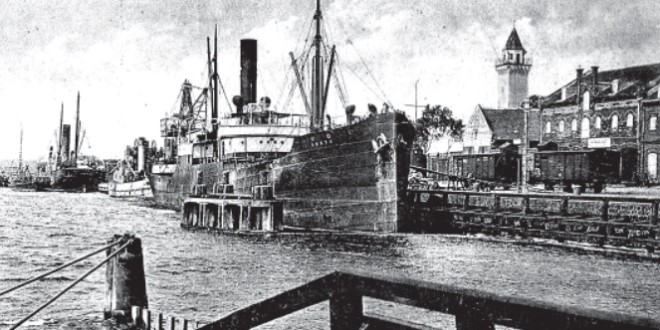By Henry L. Gaidis

An ingenious plot returns Lithuania’s only seaport after centuries of separation, and opens up its gateway to the world
THIS YEAR MARKS THE NINE- tieth anniversary of the Liberation of Klaipėda, one of the most significant events in Lithuanian history in the modern era. Although most Lithuanians know the nation’s 1918-1920 War of Independence— fought against Poles, Communist Russians, and Czarist White Russians—established a free and independent state, few realize independence was not assured until Klaipėda was restored to the nation. Without control of this ice-free port, the otherwise landlocked nation would have succumbed to a slow economic de mise.
At the end of World War I, the victorious Allies met at Versailles, where they imposed sanctions upon the defeated nations and sought to reestablish a Czarist state. However, most of Russia had by then fallen under Communist control, and a number of new states had appeared making this option nonviable. Among these new states was the Republic of Lithuania, although it would not be recognized de jure for three years. Since they had not yet recognized the republic, when the Allied powers separated Klaipėda (Memel) from Germany, they placed the seaport and its adjacent area under temporary administration by France.
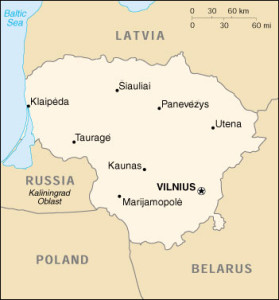
The region had been populated by Lithuanians for centuries, but fallen under German Prussian occupation since the Middle Ages. The East Prussian state, in order to control Lithuania Minor, pursued a vigorous policy of Germanization, and over time, the ethnic Lithuanians there slowly developed their own dialect and customs. Although the rural areas continued to be inhabited by ethnic Lithuanians, the city and seaport became largely populated by Germans, who filled all the administrative positions. The French appointed General Dominique Joseph Odry and High Commissioner Gabriel Jean Petisne to administer the region and sent a small number of French troops in support. Unfortunately, the French relied heavily on German port administrators and this hamstrung the economic life of Lithuania. The French support for Poland raised fears that this vital seaport would fall into Polish hands.
The events that followed are worthy of Mission Impossible: the Prime Minister of Lithuania directs a small group of military officers to instigate an insurrection in Klaipėda that returns the seaport and its surrounding territory to Lithuania. For political reasons, the Lithuanian government disavows all knowledge of the mission, and warns those involved they could be subject to criminal prosecution if the operation fails.
Many concluded something drastic had to be done to save Klaipėda from becoming a free city like Danzig or, worse, being turned over to Poland. Among the Lithuanian leaders in Klaipėda alarmed by the situation were members of the Prussian Lithuanian National Council, who realized Lithuania Minor could only be returned to Lithuania through military action. When members of the Council Erdmonas Simonaitis and Martynas Jankus met secretly with Lithuanian Prime Minister Ernestas Galvanauskas, they learned he was thinking along similar lines, but for political reasons, could not sanction such a move.
To protect Lithuania’s interests, Galvanauskas pursued the idea through diplomatic channels. He ascertained the Weimar Government preferred Klaipėda in Lithuanian hands because it considered Lithuania neutral and France and Poland, who were likely to be given the territory by the League of Nation, major enemies. It has since been learned that Berlin maintained unofficial contact with the Lithuanians during the revolt and urged local Germans not to hinder the action. The Soviet Russians, who opposed a larger Polish state, not only supported the action, but would intervene if Poland moved against Lithuania. Strangely enough, the Polish government also preferred to see Klaipėda in the hands of Lithuania rather than become a free city, like Danzig, under German influence.
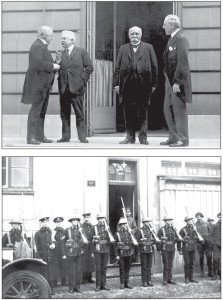
On November 20, 1922, Galvanauskas brought up the topic in a secret session of the Lithuanian government after it appeared the League of Nations was not going to rule favorably on Lithuania’s claim to Klaipėda and was likely to establish a Danzig-like free city or place it under Polish administration. After receiving a favorable response to the forceful seizure of Klaipėda, General Silvestras Žukauskas, the hero of the Lithuanian War of Independence, believed the Lithuanian Army could invade and disarm the small French military contingent within twentyfour hours. But it was decided direct Lithuanian military action might start a war with France or resume the Lithuanian-Polish War, so an agreement was reached to organize an independent Lithuanian insurrection along the lines of General Želigowski’s Mutiny in October 1920 that led to the invasion and occupation of Vilnius and surrounding territory by Poland.
Preparations were left to Galvanauskas, who ordered the planning and execution of the uprising. So it would be a genuine surprise to the Lithuanian nation, he took great care to hide any links with the rebels and kept the operation secret from the Ministry of Foreign Affairs and the Seimas. Since the Lithuanian Army was not to take part, he obtained the support of Vincas Krėvė-Mickevičius, the cochair of the independent semimilitary Lithuanian Riflemen’s Association (Lietuvos Šaulių Sàjunga), for manpower. Since most of the riflemen had fought alongside the Lithuanian Army in the War for Independence, they were combat-proven and reliable. Another advantage of using the riflemen was the government could blame the patriotic organization to absolve itself of responsibility for the insurrection.
The action was planned by the Lithuanian General Staff. Although details regarding its development remain murky, Colonel Jonas Polovinskis, a Lithuanian Army counterintelligence officer, clandestinely coordinated the military action since known to history as the “Klaipėda Insurrection.” He was an ethnic Lithuanian who had held a number of positions in the Czarist Government. He had served with great distinction as a military intelligence officer in the Russian Army during World War I, rising to the rank of Colonel, and was decorated on a number of occasions for his bravery and service. He continued in counter-intelligence with Admiral Alexander Kolchak’s White Army in 1920 and 1921 in a failed attempt to restore the Czar to the throne.
Upon returning to Lithuania in 1921, Polovinskis found a position with the Lithuanian Army and was soon serving as chief of the Lithuanian Counter-Intelligence Service. He had been tasked with leading a special clandestine team to the Klaipėda area to ascertain the feelings of the population toward Lithuanian annexation and became well-versed with the territory and its inhabitants. His report found the local population divided equally between either wishing to join with Germany or Lithuania, or forming a free city. This situation was complicated by the native Lithuanians of Lithuania Minor who had developed their own identity, which included adherence to the Lutheran rather than Roman Catholic faith. Many of these Lithuanians were economically well off and worried that an influx of farm products and workers from Lithuania proper would cheapen their products and destroy their livelihood. Surely, this report brought Polovinskis to the attention of Galvanauskas and led to the latter’s decision not to take an official part in the Klaipėda Insurrection, but to select Polovinskis to lead it.
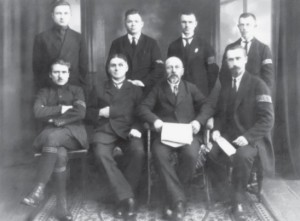
Lithuanian activists were sent to various towns and villages in the Klaipėda region in November and December of 1922 to deliver patriotic speeches and form local organizations willing to support an insurrection. These small local groups were unified at a gathering in Klaipėda on December 18, 1922, which established the Supreme Committee for the Salvation of Lithuania Minor (SCSLM). Martynas Jankus was elected chairman and would serve as the insurrection’s political leader. That same month, Krėvė-Mickevi- čius met with representatives of the German Army, who assured him they would not interfere with an insurrection. In addition, they sold him, at a reduced rate, 1,500 Mauser rifles, 5 light machineguns, and 1.5 million rounds of ammunition.
Polovinskis recruited a number of likeminded Lithuanian military of ficers willing to take part in this unofficial action and risk the dangers of combat and criminal prose- cution. To provide cover, he and his officers each adopted a nom de guerre. Polovinskis became known by his code name, Jonas Budrys, which he was to use for the rest of his life. His Chief of Staff, Captain Juozas Tomkus, became Oksas; his assistant, Juozas Šarauskas, Juozapaitis; and so on. Budrys would command the main force of the insurrection, frequently referred to as “Budrys’s Army.” Upon the call of the SCSLM, he would move on the city, his flanks covered by support formations.—On January 7, 1923, the SCSLM issued a proclamation entitled Broliai Šauliai! (Brothers Riflemen!), announcing they were taking up arms to rid themselves of “slavery” and calling upon the Lithuanian Riflemen’s Association for help. Two days later, the SCSLM’s Šilutė chief declared the existing French Klaipėda Directorate dissolved and authorized Erdmonas Simonaitis to establish a new directorate to govern the territory. The declaration was published in German and Lithuanian—both proclaimed official languages—ordered the release of all political prisoners, and established martial law. The proclamation appealed to the French soldiers not to resist this action, because it was the will of the Lithuanian people.
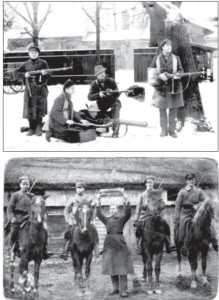
On January 10, 1923, 1,090 Lithuanian volunteers in civilian dress crossed the border on trains from Kretinga and Tauragė. Among them was Vladas Putvinskis, the military commander of the Lithuanian Riflemen’s Association, providing the cover demanded by the Lithuanian government, and Lithuanian American flyer Steponas (Stephen) Darius, who with Stasys (Stanley) Girėnas, would become famous for the ill-fated 1933 trans-Atlantic flight.
Upon their arrival in the Klaipėda territory, the volunteers were met by Budrys with some 300 local volunteers. Each Lithuania Minor volunteer wore a green armband with the initials MLS to identify him as a Mažosios Lietuvos sukilėlis/savanoris (Lithuania Minor Insurgent/ Volunteer). Armed with a rifle and 200 rounds of ammunition, the infantrymen were supported by 21 light machinegun crews, 4 motorcycles, 3 cars, and 63 cavalry horses. To conceal their identity, they were ordered not to carry any Lithuanian documents or even currency. To curtail local anger, each volunteer was ordered to be polite at all times and to avoid looting, drinking alcohol, and making inflammatory comments.
The largest formation, consisting of 530 men commanded by Major Jonas Išlinskas, codename Aukštuolis, was assigned to capture Klaipėda; the second formation of 443 men, under Captain Mykolas Kalmantavičius (Kalmantas), codename Bajoras, was tasked with the capture of Pagėgiai (Pogegen) and securing the border with Germany; the third formation of 103 men led by Major Petras Jakštas, codename Kalvaitis, was to capture Šilutė (Heydekrug and cover the insurgents’ flank. Although they met with little resistance, the volunteers encountered great difficulties from cold weather, lack of transportation, and inadequate clothing and food.
By January 11, 1923, the Lithuanian insurgents had secured all their objectives with little resistance, with the exception of some parts of Klaipė- da held by the French. With the refusal of French Commissioner Gabriel Jean Petisne to surrender his force of 250 French soldiers, 350 German policemen, and about 300 civilian volunteers, a brisk engagement ensued. Petisne agreed to a ceasefire that afternoon and his soldiers were interned in their barracks. During the engagement, twelve Lithuanian insurgents lost their lives along with two French soldiers and one German police officer. Two other French soldiers were wounded, but recovered.
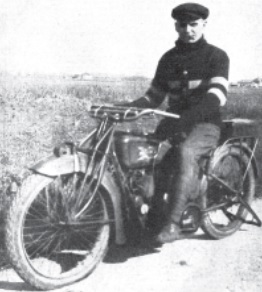
In addition to the earlier mentioned Steponas Darius, a number of other Lithuanian Americans participated in the insurrection, among them Antanas Ivaškevičius (Anthony Ivas), the brothers Kostas and Julius Jurgėla, Jonas Žilinskas-Žilius, Andrius Martusevičius-Martus, Pranas Purvis, Juozas Zaukus, and Pranas Rimkus. Darius and Ivaškevičius were both members of the Supreme Committee for the Salvation of Lithuania Minor. Darius did planning and led an armed unit while Ivaškevičius travelled through the country giving speeches to rouse the population. He also provided a great amount of money to the committee. He was the first Lithuanian American awarded the Lithuanian Riflemen’s Association’s Šaulių Žvaigždė (Riflemen’s Star). Jonas Žilinskas-Žilius served as Governor of Klaipėda in 1925 and 1926. A number of Lithuanian organizations were set up in the United States to support the liberation of Klaipėda. They engaged in heavy propaganda through the press and raised funds for the Liberation of Klaipė- da, before and after the insurrection.
On January 13, 1923, the Klaipė- da civilian leader, Simonaitis, formed a new pro-Lithuanian directorate, which included Vilius Gaigalaitis, Martynas Reizgys, Jonas Toleikis, and Kristupas Lekšas, to administer the seaport and region. Although the French and Polish governments protested and sent warships to the area, the British declined to support their action. The Allied Conference of Ambassadors dispatched a commission of inquiry to Klaipėda and demanded the insurgents withdraw from the city. While French and British warships remained in the harbor, the Lithuanian government denied any part in the insurrection, and the Allied demand was withdrawn. On January 20, the Klaipėda Region Special Representative transferred all sovereign rights to the Republic of Lithuania. The insurgents began to organize a local army on January 24, and pledged to swiftly restore civilian control to the district.
On January 29, a French proposal to send troops to quash the revolt was rejected after the British and Italians supported Lithuania. Although the Allies made one last gesture two days later, when they sent a sternly worded ultimatum demanding the insurgents disband, no action was taken. That ultimatum was recanted on February 4 in a diplomatic note requesting that the Klaipėda region be transferred in an orderly fashion. A second message, on February 11, thanked the Lithuanian Government for peacefully resolving the crisis.

To further appease the international community, on February 15, the Klaipėda Directorate was disbanded and Viktoras Gailius formed a new provisional five-member directorate that included two Germans and three Prussian Lithuanians. Finally, on February 17, the Allied Conference transferred Klaipėda and its surounding area to Lithuania with the agreement that the region be granted outonomy and Lithuania compensate the Allies for the cost of administration and assume German war reparations. With Lithuania’s acceptance of these terms, the Klaipėda Insurrection was legitimized and the matter resolved. Although this insurrection is often considered a great Lithuanian feat, many recent historians conjecture that the League of Nations’ action to relinquish Klaipėda was an unofficial way to compensate Lithuania for its earlier loss of Vilnius to the Poles. Regardless of the reason, the 1923 insurrection firmly established Klaipėda as part of Lithuania, and neither the subsequent brief Nazi annexation nor the prolonged Soviet occupation changed that fact.
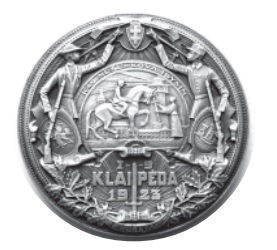
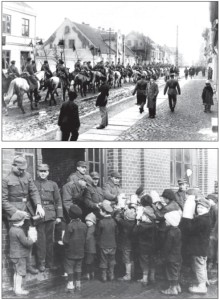
 DRAUGAS NEWS Lithuanian World Wide News in English
DRAUGAS NEWS Lithuanian World Wide News in English
